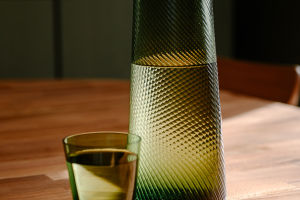In the realm of interior design, colors play a pivotal role in shaping the ambiance and personality of a space.
Among the diverse palette of colors, orange stands out as a bold and invigorating choice.
As associated with warmth, energy, and enthusiasm, orange can transform a home into a vibrant and welcoming environment.
This article explores the use of orange in home design, its psychological effects, effective implementation strategies, and the potential challenges and benefits of integrating this dynamic color into various spaces.
8 Vibrant Living Room Ideas with Orange Decor
Video by roomdsignTV
The Psychological Impact of Orange
Orange is often associated with warmth, creativity, and enthusiasm. Its bright and stimulating nature can invigorate a space, making it feel more lively and inviting.
Psychologically, orange is believed to enhance mood and foster social interaction, making it an excellent choice for areas where people gather, such as living rooms and dining areas.
The color orange combines the energy of red with the cheerfulness of yellow, resulting in a hue that exudes positivity and dynamism.
It is known to stimulate conversation and creativity, which can be particularly beneficial in spaces where family interactions and social activities occur. For this reason, orange is often used in homes to create a vibrant atmosphere that encourages engagement and warmth.
Effective Implementation of Orange
When incorporating orange into home design, it's essential to consider the intensity and application of the color to achieve the desired effect. Here are several effective strategies for using orange in various parts of the home:
Accent Walls: One of the most popular ways to introduce orange into a room is through accent walls. A bold orange wall can serve as a focal point and inject energy into the space without overwhelming it.
This approach works well in living rooms, dining areas, or even bedrooms, where a splash of orange can create a striking visual impact.
Textiles and Accessories: For those who prefer a subtler approach, incorporating orange through textiles and accessories can be an excellent option.
Orange throw pillows, rugs, curtains, or artwork can add pops of color without dominating the entire room. This method allows for flexibility and easy updates if tastes or trends change.
Furniture: Orange furniture pieces can make a bold statement and serve as eye-catching elements within a room.
Consider adding an orange sofa, armchair, or ottoman to create a vibrant centerpiece. Pairing orange furniture with neutral walls and accessories can help balance the intensity of the color.
Kitchen and Dining Areas: Orange can be particularly effective in kitchen and dining areas, where its energetic qualities can enhance the atmosphere.
Orange cabinets, backsplashes, or dining chairs can make the space feel more inviting and stimulating, encouraging conversation and activity.
Outdoor Spaces: Orange can also be used to brighten up outdoor areas such as patios and garden spaces. Orange outdoor furniture, cushions, and planters can create a cheerful and lively environment that complements natural surroundings.
Challenges and Considerations
While orange can be a dynamic and energizing color, there are some challenges and considerations to keep in mind. One potential issue is the risk of overwhelming a space if orange is used excessively. To avoid this, it's crucial to balance orange with complementary colors and incorporate it in moderation.
The intensity of orange can vary, from soft peaches to vibrant tangerines. The choice of shade should align with the overall mood and style of the home. For instance, softer shades of orange can create a warm and cozy ambiance, while brighter hues can infuse a space with excitement and liveliness.


